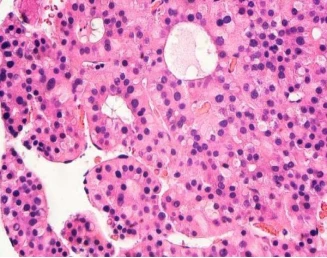Studies have found that novel cellular mechanisms can be used to target tumor tissue

Studies have found that novel cellular mechanisms can be used to target tumor tissue

Copyright © iCell Bioscience Inc, Shanghai 2018-2019
Recently, a research report published in the international magazine PLOS Biology, researchers from Imperial College of Science discovered a new type of cellular mechanism or can be used to target tumor tissue.

The newly discovered "switch" can control the activity of two proteins, the tumor suppressor DLC1 and talin, both of which control whether cancer cells will spread to other parts of the body, but researchers are not aware of this. The specific mechanism of action of the two proteins.
In this study, the researchers found that the way in which talin protein expands with exercise may be the determinant of DLC1 activity, so it is very important in the process of hepatocellular carcinoma. Under appropriate conditions, such as specific gene activation or decreased function of the body's immune system, cancer cells will migrate or metastasize to other tissues, which will promote the spread of cancer, once the cancer spreads to the secondary sites of the body, Researchers are hard to deal with, so effective cancer prevention is the first thing researchers should do.
The research can help researchers understand the way tumor cells migrate, and it can also find effective ways for researchers to target and inhibit the spread of cancer, especially hepatocellular carcinoma; researcher Hernandez said that our findings are more All areas of research have implications, such as tissue engineering, cancer research, and drug testing using chips.
Just like the skeleton controlled by external forces, cells can also react to external forces and contract and move. For example, the inner structure of the cytoskeleton can generate some force to help cancer cells migrate. The talin protein can adsorb to the cell membrane and build a "bridge" inside and outside the cell, which is coiled like a spring to be able to sense and react to mechanical forces in time. These forces change the shape of the talin protein, which inactivates DLC1, so that its DLC1 can not control the tumor suppressor function, which can promote cancer progression. The researchers are not aware of how the talin protein completes the shape change process.
The researchers studied the pattern of talin protein response to exercise in fibroblasts. Fibroblasts can help heal wounds and repair damaged tissues. If no inhibition is applied, fibroblasts produce scar tissue in the liver. , thereby inducing cirrhosis and hepatocellular carcinoma.
In the next step, the researchers will delve into the specific application value of the above two proteins. Although the researchers have only conducted research in fibroblasts, all the molecules discovered by the researchers in this study can be found throughout the body. People hope to clarify the mechanisms by which these proteins work in other tissues.
 Loading ....
Loading ....
